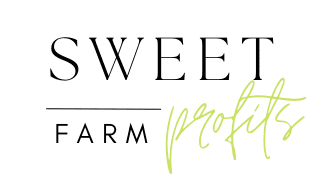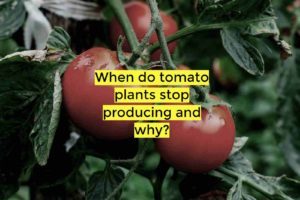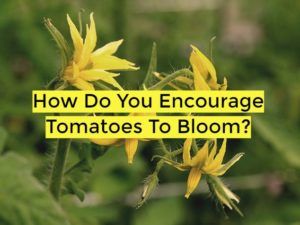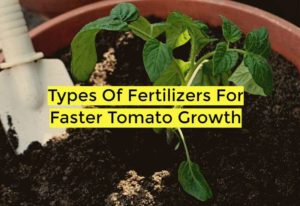Avoid over-pruning tomato plants
With plants, the feedback is not always immediate. This makes it hard to really know whether you did a good job or not. You have to wait till harvest time. However, certain practices like cutting off the leaves, if overdone, can see after a short time.
Did I over prune my tomato plants?
How would you know that you over pruned? You will see the leaves folding to show that it is stressed.
This means it is struggling to feed itself with the number of leaves it has left. There is more demand for energy than the leaves can supply. This causes shock. Limit the number of leaves you cut off.
What are some of the risks of over-pruning?
One of the risks will be a decrease in production. When the leaf count I significantly reduced, there will be less food getting manufactured by the leaves.
Reduced food production will mean even lesser food gets to storage which is the tomato fruits. The end result is smaller fruits.
The other risk carried by pruning that you should be concerned about is spreading diseases to your plants.
Pruning can be done using bare hands or assistive tools like scissors, shears, and blades. However, blades are not highly recommended because they cause a tear on the plants’ skin.
Also, you need both hands with one holding the plant for it to work. When you touch an infected plant or plant part with your bare hands or using your tools, the microorganisms causing diseases are deposited from the infected plant to your hands or tools.
When you move to prune the next plant, you unknowingly deposit those same microorganisms when you or your tools come into contact with the plant.
The microorganisms get into the plant system and begin causing diseases.
Carelessly handling plants without disinfecting hands and tools
You have put in all this hard work and the last thing you could imagine is losing your entire crop because you wanted to take better care of them.
I have been in your shoes once wondering how I can prune my tomatoes carefully without causing or spreading diseases to my crop.

The trick is disinfecting or sterilization. You apply disinfectant on your tools or hands as you move from one plant before touching the next plant. This will kill the disease-causing organisms that are deposited on you or your tools.
You are going to touch the plants anyway, you might as well ensure their safety while doing so.
For disinfectant, you can use regular bleach mixed with water and pour the mixture into a spray bottle. You can mix the bleach to about 0.5%. This would require 5ml bleach for every 1000ml of water mixture.
You can also use 70% ethanol in your spray bottle. The 70% means that the mixture contains 30% water and the rest is ethanol. You can also use surgical spirit as an alternative.
How to sterilize…
Spray your hands or tools with either of these mixtures before touching the next plant. This will reduce the risk of spreading the disease.
Read More: 6 Tomato Pruning Mistakes That Keep You Up At Night
What are some of the benefits of pruning tomato plants?
Preventing the spread of tomato diseases
The good thing about pruning is that you prevent the further spread of any disease in your farm or garden. In plants, you stop the spread of a disease from one part of the plant to another by cutting off the infected part.
You need to have a basket around during this process where you place the cuttings and dispose of them far away from the farm. Here, they can either be buried or burned.
Improve fruit production and plant performance
You can prune the tomato plant to reduce the amount of foliage so that each cluster has about 3 branches above it supplying it with food. Leaves below the fruit cluster do not feed any fruit and therefore the food they produce is wasted.
Get more air to the leaves
Cutting the excess leaves helps improve the supply of oxygen to the leaves. When you prune the excess foliage, the leaves get more oxygen and produce more food which results in bigger fruits and healthy plants.
Read More: Benefits Of Pruning Tomatoes
When is the right time to prune?
Pruning sounds like fun and the benefits are quite the number. Now I know you are probably wondering what would be the right time to start pruning.
You can initiate this activity any time during the vegetative phase and continue throughout the fruiting phase.
The moment you begin to see suckers sprout is the right time to cut them out. However, you are advised to wait until they are about 3 cm tall before you take them out. This is because you should cut them a few millimeters from the main stem.
Cutting them too close to the main stem may result in physical injuries or wounds to the plant. These wounds will act as avenues for disease to get into the plant and fester leading to the devastation of your crop.
Keep scouting for new suckers cropping up on your tomato plants. You want to get them before they are too big and firmly attached to the main stem. Removing them may be a source of stress for the plant. Maintain this practice regularly throughout the life of the tomato.
Read More: What Is The Best Time To Start Pruning
How much should you prune a determinate tomato plant?
Pruning is a way of keeping your plant in shape. You take away all the excess, sick, and unwanted plant parts and retain the healthy productive parts. Now you find yourself wondering, how much should I prune to get a healthy plant?
With determinate tomatoes, you want to keep the suckers and only remove the ones that appear sick.
You cut off the excess leaves so that your plant focuses its energy on feeding the fruits and not the leaves. Or if that part is infected.
The leaves, especially lower leaves, are also pruned not just the suckers. Leaves are the plant’s way of making fruits but when they become too big and too numerous they may cause a reduction in yield.
You might be familiar with the phrases ‘too much of something can be harmful to you. This applies here too. You want to keep the pruning at a level that fosters production.
The opposite would be burdening your crop with stress which will result in underproduction.
What about indeterminate tomatoes…
When dealing with indeterminate tomatoes, you want to take out all the suckers so you are left with only the main stem.

Newly pruned indeterminate tomatoes in a greenhouse. The lower leaves and all suckers have been removed and collected.
Tomato suckers appear between the main stem and the branches. You will likely find one at every intersection of the two. They behave like fully-fledged plants in that they can grow to produce their own suckers and continue the cycle. The result is a bushy tomato plant with many fruits but of a smaller size majority.
You pick out that sucker and toss it in a collecting bin you are carrying with you for that exact purpose. You don’t want to leave the cuttings lying around. You perform this action routinely because as the young plant develops, more suckers will come with that.
The end result will be a tall, thick-stemmed tomato plant reaching for the highest heights of your greenhouse or garden.
I should mention that this practice works best on the indeterminate variety of tomatoes that I talked about here. The kind that has just one main stem where all the fruit clusters will grow from.
The reason for not doing it on the bush variety of tomatoes is to maximize the short harvesting period. Determinate or bush tomatoes are known to bloom over a short period of about 3 months, produce fruits, deteriorate and die.
Because of the short harvest period, you want as many cluster forming units on one plant as possible. More clusters, more fruits! I really wanted that to rhyme.
So for the determinate tomatoes, you want to leave the suckers on for the entire life of the plant.
Read More: Tying Up Tomato Plants (Tomato Staking DIY)
Why you should prune tomato bottom branches and leaves?
You also snip off a whole branch, a few leaves, or part of a branch. You take out the whole branch only once you have harvested the tomato fruit cluster under it on the main stem. Otherwise, you might end up with very small fruits.
Remember, the roots take in water and minerals which are essential for the maturity of your plants. When you have many leaves, these resources have to be divided among the leaves and fruits.
Too many leaves mean the leaves will not perform optimally because of the shared roles. You want a few leaves working at optimum capacity to reduce wastage and increase yield.
What should you expect pruning tomato plants in pots?
Pots are no different. Once you are certain of the variety you planted then choosing a pruning routine should be a breeze.
To put it simply, you will either prune if you planted the indeterminate variety or not prune if you went for the determinate variety instead.
One advantage of using pots that I would be remiss to mention is the fact that the pot raises the plants way above the ground. This elevation will protect your plants from close contact with the soil which puts them at risk of getting infected by various diseases.
Another advantage is that with a gardening pot, you can carry soil from elsewhere into the pot and use it for planting.
If, for example, you created a superb mixture of manure and organic fertilizers, you will not run the risk of your hard work getting leached away into the surrounding soil by Mother Nature.
Why? Because the pot acts as a barrier that prevents the movement of contents out of it.
Planting in a pot also helps keep the fertilizers and water around the plant root area for a longer period of time.
Also, as the name suggests, the pots are portable. This makes it easy for you to adjust their position whenever necessary. Maybe you want to increase or reduce the spacing from one plant to the next one, portability makes this quite effortless.





[…] the season and when the season ends, you can walk around the farm or greenhouse and prune out the infected plant or plant part. You can tell the leaves are infected when you see tunnels in the leaf fruits […]
[…] allows easy access to the suckers and branches when pruning your tomatoes. There is little unnecessary contact with plant parts that do not need pruning thereby reducing the […]
[…] avoid a scenario where you have an over-excited plant, you can prune the plant to get rid of some of the branches and leaves. The plants can coexist within the space they […]